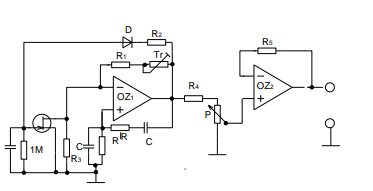I need to make an RC oscillator with a Wien bridge and JFET amplitude stabilization, I have a schematic, but no formulas on how to calculate the values. I tried to look around the internet, but found nothing that works for me. Here is the schematic:

Also the frequency should be 1 kHz, the amplitude 0-5 Vef and the output resistance lower than 100 Ω.
Here you can find similar schematics: https://www.sse-najizdarne.cz/dokumenty/studijni_materialy/ov/uc_text_oscil%C3%A1tory.pdf



